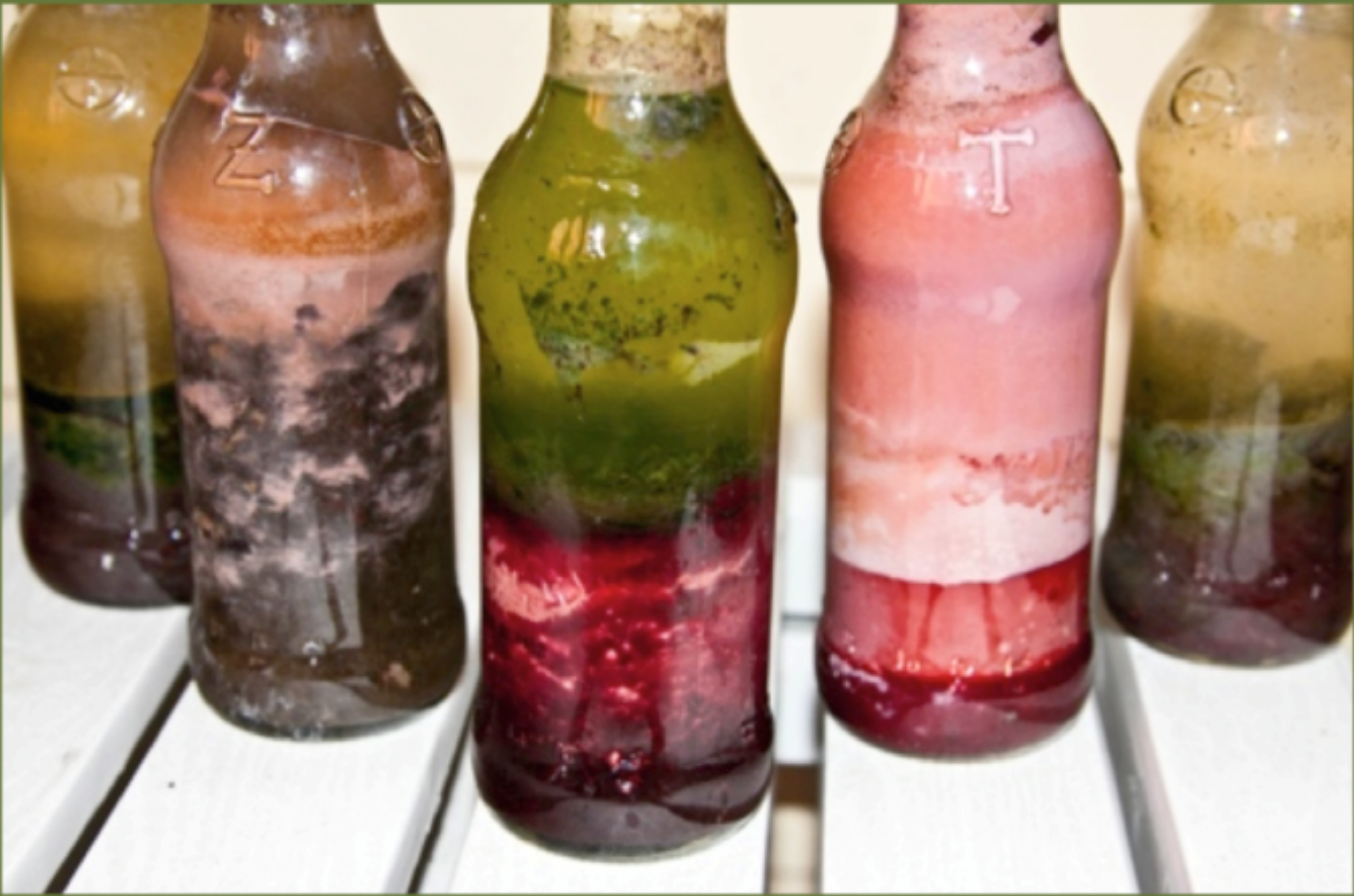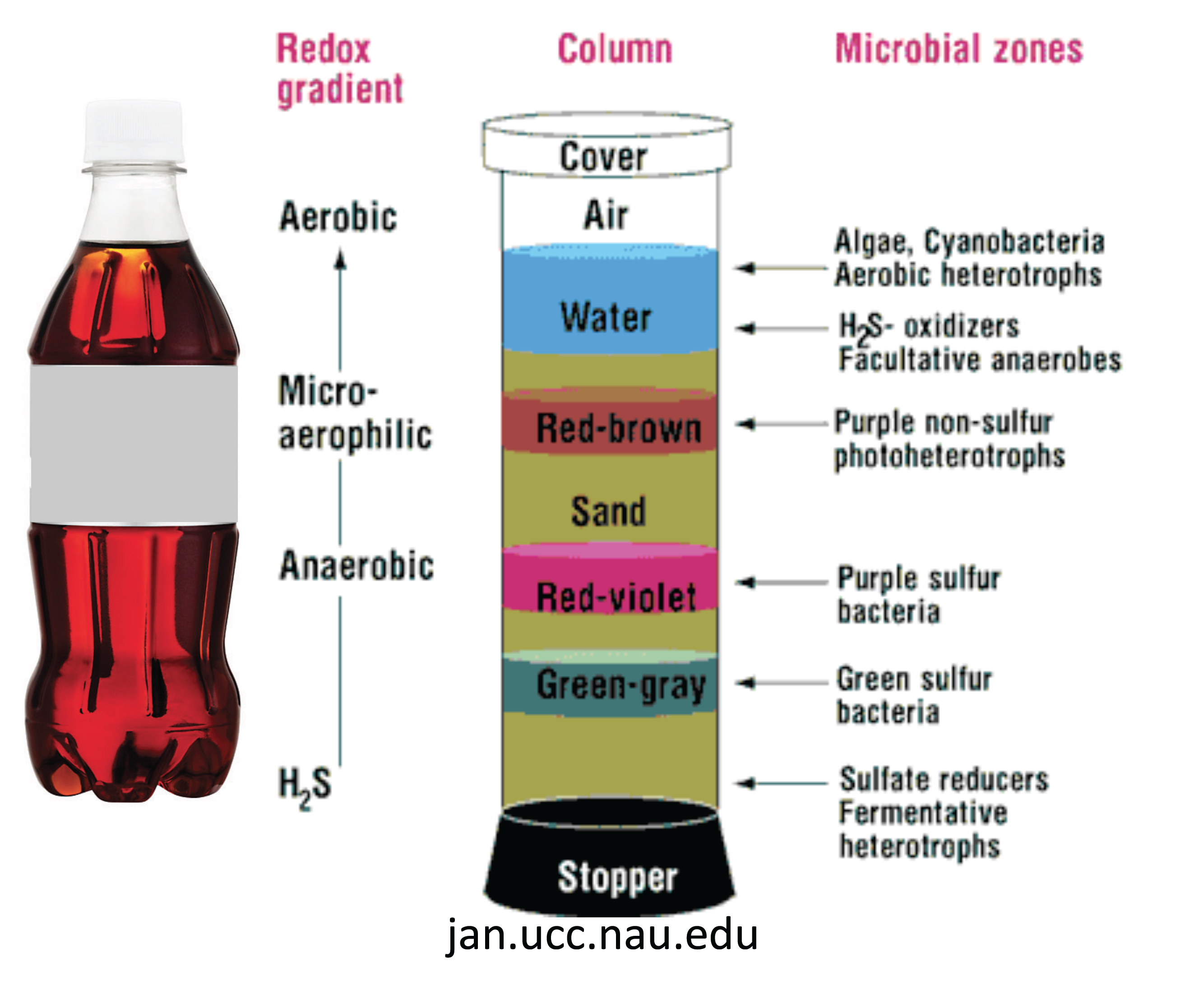
Figure 1. Winogradsky columns showing colourful horizontal regions where different types of bacteria thrive. From biointeractive.org.
DIY Winogradsky Column, aka "Mud can be beautiful!"
During the 1880s, microbiologist Sergei Winogradsky developed a column for studying different types of microorganisms that vary in their preference for oxygen and ability to use light for energy. Within the column, different gradients form based on the microbes that are active in that "strip", resulting in striking colour differences. The Winogradsky column remains one of the most valuable microbiology teaching aids in use today, including at the University of Waterloo.
- Find a clear plastic drink bottle (500 mL) and cut off the top, or find some other narrow glass bottle or cylinder. You can be creative here, anything tall and narrow and clear- old vase?
- The fun and stinky part: Collect ~2-3 litres of mud from a marsh, swamp, or stream. Any water-saturated (and stinky!) sediment should be fine.
- Another stinky part: Divide the mud in half. To one half add an egg yolk (crushed from a hard-boiled egg; sulfur source), a teaspoon of baking soda (carbonate), and a small handful of shredded newspaper. Mix well.
- Fill 1/3 of the bottle (or a little less) with the yolk-soda-paper mud and pack it well. Fill 1/3 (or a little more) of the bottle with the mud without additions. Fill up most of the remaining space with water taken from the same sampling location.
- Seal the top with clear film and an elastic band (for the drink bottle) or with a loosely (to let any gases out) closed lid (if you prefer for a narrow glass bottle, but plastic wrap also works).
- The waiting part: Place in a well-lit area, not necessarily receiving direct sunlight, and wait. Colours will change and will be most impressive after 1-3 years. Figure 2 below describes the types of bacteria that create the different colour environments in your column.

Figure 2. Diagram showing various layers that can form in a Winogradsky column, and the microbes responsible. From jan.ucc.nau.edu
We would love to share this experience with you! Take a pic of your results and tag @WaterlooSci on Instagram or Twitter.